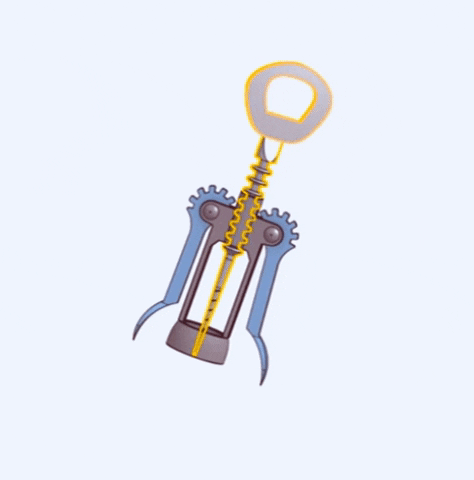Bottle Opener
ME-182 PROJECT

Our Team
Get to Know Us

Talha Uğuz

Berkay Akyel

Emre Kısa
History of Bottle Opener
The Corkscrew
Like so many other inventions, was borne out of necessity. For as long as we have sold wine in glass bottles sealed with cork stoppers, consumers have struggled to easily remove those corks. As soon as the earliest glass bottles arrived in late seventeenth-century England, inventors began dreaming up instruments to ease the removal of corks.
THE FIRST PATENTED CORKSCREW
Reverend Samuel Henshall received the world’s first patent for a corkscrew in 1795. Henshall, a religious official in Oxford, England, collaborated with Mathew Boulton, a prominent manufacturer in Birmingham, to bring his corkscrew to the market. Henshall’s key improvement on the wooden-handled steel worm was the insertion of a concave disk between the handle and the worm. The disk served two purposes: it prevents its user from screwing too deep into the cork and it forces the cork itself to turn once that limit is reached, breaking any seal between the cork and the glass neck. Henshall’s corkscrew was so effective that it was used widely for over 100 years.
INVENTING THE SINGLE DIRECTION TWIST
The next key innovation in corkscrew design can be traced to another Englishman, Edward Thompson. Thompson, in an 1802 patent, documented a way to allow a user to turn the corkscrew in a single direction by employing nested screws, which turn in opposite directions. When one screw reached its limit, a second screw engaged, allowing the cork to begin its move upward. This design element made its way into many other corkscrew designs, including the famous “Zig-Zag” corkscrew.
THE WING
The double-lever, rack-and-pinion “Wing” corkscrew has its origins in H.S. Heely’s 1888 British patent on a corkscrew he called the A1 Heeley Double Lever. A version of this corkscrew reached the United States in 1930. Patented to Italian designer Dominick Rosati, the design remains quite popular. As you twist the screw into the cork, a pair of levers rise on each side of the bottle’s neck. When you push the levers down the cork rises. When crafted out of heavier, thicker metal it can be easy to use and quite effective. Cheap, flimsier versions can be frustrating to use, as the leverage the corkscrew should provide just isn’t there.

Disassembly of Corkscrew
OUR PARTS
 |  |  |  |
|---|
Sketching

Sketch of Main Body

Sketch of Opener

Sketch of Rivets

Sketch of Wings
Onshape Drawings
 |  |  |  |
|---|
Assembly
.png)

Technical Drawing

Main Body
Opener Part


Wings
Rivets

.png)
